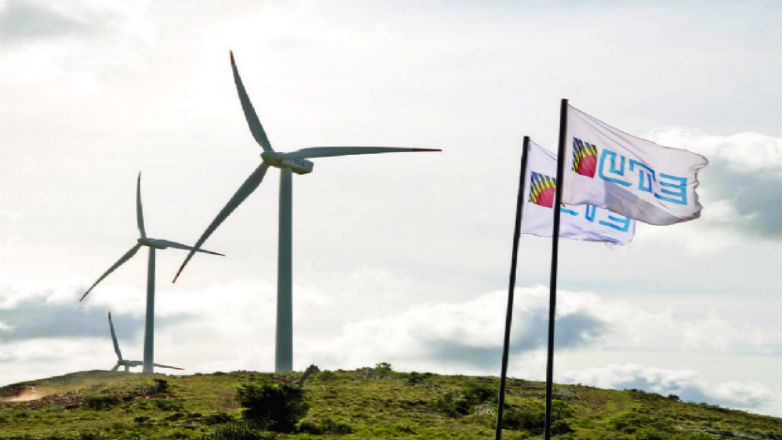The country plans to increase to a 35% its wind generated electricity in 2017. In addition new laws are passed to promote photovoltaic projects.
In only one decade Uruguay achieved a task that seemed unimaginable, to become the Latin American country with the biggest proportion of wind generated electricity and one of the global leading countries -in relative terms- in renewable energies. With this task, Uruguay is more resilient to climate changes and to the increasing droughts in its hydroelectric power plants.
The country reverted its energy deficit. According to the last National Energy Office balance, between 2013 and 2014, Uruguay did not need to import energy after 20 years doing so. Today, the 50% of its energy is from renewables, according to Ramón Mendez Uruguay’s head of climate change policy.
The diverse energy mix allowed that renewables provide 94% of the country’s electricity, including wind energy, hydropower, biomass and solar power. With that shift the country reduced its vulnerability to climate change and has greater resilience to droughts.
The push to renewables
The 22% of Uruguayan electricity is wind generated. This numbers are far superior to Brazil for example, which percentage is near a 6% according to the Brazilian Wind Power Association. On an international level, other countries with high percentages of wind energy are Portugal, 23%, Spain 19% and Germany 15%.
For 2017, Uruguay aspires to have a 35% of wind-generated electricity, standing near to Denmark (42%), the global leader according to numbers provided by the Global Wind Energy Council.
Carolina Cosse Uruguay’s Industry Ministry announced the increase of wind power energy in 400 megawatts (MW). “We will continue to stimulate wind power energy. We are also stimulating photovoltaic energy if prices are reduced. We passed a decree to encourage the production of solar panels in Uruguay to reduce costs. This is the first step in industrialization.” –she said.
On March 9 the national government passed a bill to promote local made solar panels exonerating taxes to the purchase of goods for the building of solar panels.
A study from the Ministry of Industry, Energy and Mining, points out that the employment created by a 50 MW wind power plant would comprise about 940 people in its construction and 20 people in the plant operation and maintenance.
For a 1,450 MW power plant, 27,000 job positions will be generated in the building stage (between one year and a year and a half) and 580 job positions during the operation and maintenance stage (20 years approx.)
In 2017 Uruguay will unseat Denmark
The so-called Uruguayan wind revolution led a country with 3,4 million people to have dozens of wind generators in plants located in 11 of its 19 provinces, mainly in the country’s south and center regions.
The website from the magazine America Economía informs that, according to Fernando Schaich, chairman of the Uruguayan Association of Wind Energy (AUDEE) “in a few years Uruguay went from not having wind energy to be a leader”.
In that way Uruguay plans to be the Global leader in 2017, obtained a 35% of its energy from wind energy, unseating Denmark who has a 32%.
Behind the wind power plants selling electricity to the Uruguayan government are investors form Spain, Germany, France, Italy and Uruguay. Also the state-owned company UTE has its own plants.
Now Uruguay exports energy in addition to the wind revolution that encouraged building companies, said Leonardo Barragán, the sales director of Ventus, the leading company in Uruguay’s wind power industry.
Source & photo: Página Siete
Original Spanish version: http://www.paginasiete.bo/inversion/2016/3/20/uruguay-puntal-energias-renovables-latinoamerica-90368.html





